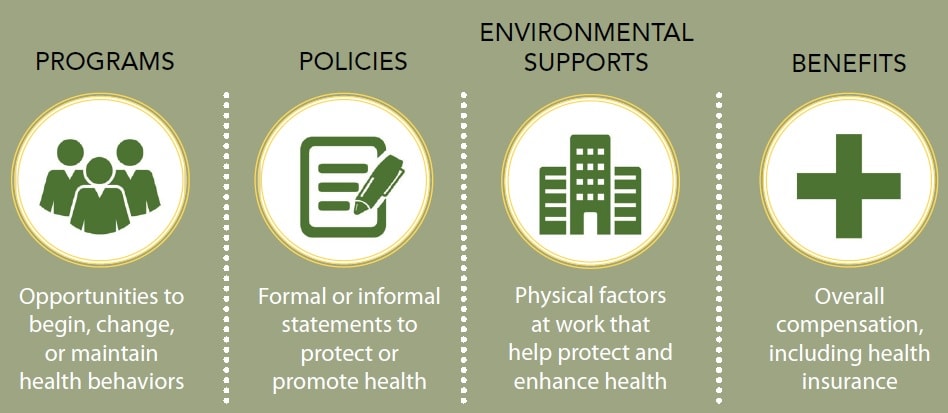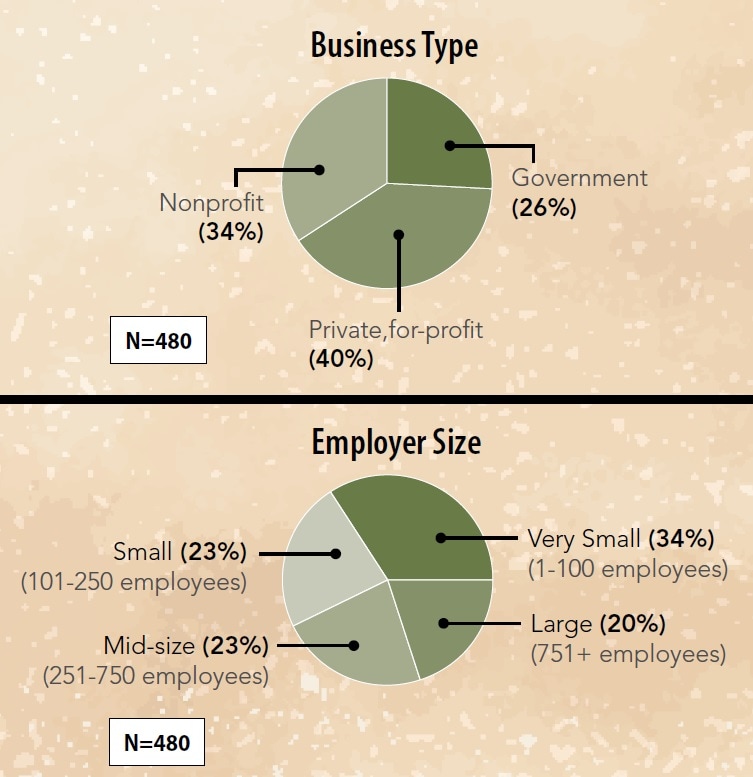Worksite Health ScoreCard: 2020 Employer Profile
The CDC ScoreCard is a tool to help employers assess whether their health promotion programs are based on the best evidence for improving employees’ health and wellness.
What Evidence-Based Practices Does the ScoreCard Assess?

“The CDC Worksite Health ScoreCard is a valuable tool that we hope will allow our participating member hospitals to assess their existing programming and create benchmarks and goals for improvement. The staff is the heart of every hospital. Greater New York Hospital Association (GNYHA) supports its members in the development and continuous improvement of their internal employee health and wellbeing programs. GNYHA is currently supporting a subset of our independent hospitals that serve many of New York City’s most vulnerable communities through a yearlong wellbeing collaborative.”
—Jenna Mandel-Ricci, vice president, GNYHA
How Are Employers Doing?
26% of employers will spend the same amount or more on wellness programs next year.
47% of worksites employers have reached use local hospitals and other health care professionals for their wellness programs.
647,865 employees reached with ScoreCard strategies.
58% of worksites have a paid health promotion coordinator.
64% of ScoreCard strategies, or 97 of 152, are in place for the average employer.
Who is Using the Scorecard?


480 worksites from 408 employers in 36 states shown in dark green submitted ScoreCards.
ScoreCard Topic |
Strategy a |
% of Worksites With Strategy in Place (2020 Score) |
|---|---|---|
| Cancer | Provide health insurance coverage for screening and vaccinations | 89% |
| Vaccine Preventable Diseases | Provide on-site flu shots | 82% |
| Maternal Health and Lactation Support | Provide private space for mothers to pump breastmilk | 79% |
| Heart Attack and Stroke | Have Automated External Defibrillator (AEDs) in place | 78% |
| Tobacco Use | Have a policy banning tobacco use | 78% |
| Organizational Support | Have a health promotion champion | 75% |
| Alcohol and Other Substance Use | Provide screening and brief intervention and referral for treatment (SBIRT) | 73% |
| Physical Activity | Have physical activity programs | 71% |
| Stress Management | Involve employees in decisions about workplace issues that affect stress | 70% |
| Depression | Offer depression counseling | 66% |
| Musculoskeletal Disorders (MSD) | Make job design changes to reduce MSD risk | 65% |
| Weight Management | Provide education on weight management | 64% |
| Prediabetes and Diabetes | Have diabetes self-management programs | 61% |
| High Blood Pressure | Provide blood pressure screening | 57% |
| Occupational Health and Safety | Coordinate occupational health and safety programs with health promotion | 53% |
| High Cholesterol | Provide cholesterol screening | 44% |
| Nutrition | Make most items in vending machines, cafeterias, and snack bars healthy | 43% b |
| Sleep and Fatigue | Design work schedules to reduce fatigue | 36% |
a Evidence-based practices (i.e., programs, policies, environmental supports, and benefits) with the highest weighted scores (2 or 3 points) in the CDC Worksite Health ScoreCard, including the strategy’s impact on population health outcomes and the strength of the supporting scientific evidence.
b Percentages are based on 359 ScoreCard submissions from employers who reported providing places to purchase food and beverages in 2020.